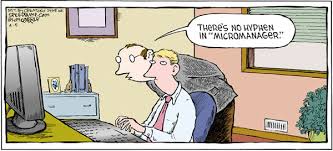Have you ever stopped to think about the relationship you have with your emotions?
Emotional Intelligence (otherwise known as EQ) is the ability to recognize, understand, and manage your emotions and influence others. It is about how we handle ourselves and our relationships, especially in times of stress. While the term was created by two researchers – Peter Salovey and John Mayer – it became popularized by Daniel Goleman in his 1995 book of the same name. Goleman cites research showing that EQ counts for twice as much as IQ and technical skills combined when determining success.
Having a high level of EQ will help us respond effectively to triggers or stressful situations. A trigger is something that sets you off and can potentially destabilize you. For example, you’re in a meeting and your coworker embarrasses you in front of your boss by sharing how you missed your deadline. Welcome to your trigger! You are trying to fathom what just happened…did that person really just throw me under the bus and then drive over me? The emotional part of your brain takes over and you are flooded with adrenaline and cortisol, the same neurotransmitters and hormones that have evolutionary and narrowly protected us from bear attacks by freezing, fighting, or fleeing. Your logical brain temporarily shuts down and you lose the ability to think rationally because you are deep into threat mode. Instead of responding deliberately and thoughtfully, you blurt out something you may not want.
If you are not careful and have not been cultivating your EQ, you can unknowingly think and behave in ways that impact your relationships and the experiences throughout the rest of your day and well after.
Here are some ways to raise your Emotional Intelligence:
1. Become aware of your triggers. Pay attention to the times when you experience stress or overwhelming emotions and frustrations, and discern patterns. Is there usually someone or something that sets you off? Maybe it is that coworker who never reads emails and asks you questions that have already been covered. Perhaps it is the team leader who piles on the work and significantly underestimates the time it will take to complete it. Maybe it is two seemingly unrelated requests that actually are connected because it has to do with the fact that your plate is full and you are unable to service them. By identifying your triggers in advance, you can properly plan out your response and use your emotional intelligence wisely when you are in that situation.
Author Anne Grady offers some helpful questions to ask to learn about your triggers: 1. It makes me angry when…?; 2. I become overwhelmed when…?; 3. I feel offended when…?; 4. I think it is rude to…?; 5. At work, I wish people would…?; 6. It makes me crazy when…?; 7. I get irritated when I come to work and…?
2. Investigate your emotions for information. Strong emotions are not bad and they do not need to be pushed down or controlled, rather they need to be explored. Our emotions evolved as a signaling system, a way to communicate with each other and to better understand ourselves. Knowing what we are feeling and why we are feeling it will increase your EQ response so you do not shoot off rapid-fire responses that are reactionary.
The inquiry can begin first with labeling the emotion by asking, what am I feeling? Anger, frustration, disappointment, sadness, embarrassment? Each emotion gives us specific insight on how to best address the situation. Second, we want to find the lesson in the emotions so we can make better decisions. What is the emotion telling me? Maybe you are constantly stressed at work, but when you dig deeper, you realize that the exact emotion is disappointment in the work that you are doing. You have labored just as many hours at another job and did not feel depleted, instead was more energized by the work. The constant arrival of that emotion can shine a light on a deeper problem and propel us to change.
3. Use your emotions to your advantage. The ability to harness those emotions and apply them to tasks like thinking and problem-solving can be incredibly beneficial. A healthy dose of frustration can be good, leading to creativity and determination. Anger can be valuable if we use it as an alarm clock to wake up and bring about immediate change; we can direct the frustration toward meeting our needs, not punishing people.
4. Calibrate your emotions. The stronger your emotions, the more likely they are to distract your behavior and potentially cripple you. If you learn ways to tone them down, they can help you better respond to your triggers. A great strategy for this is to employ a breathing technique where you take three deep breaths and exhale slowly so your body is feeling more relaxed and you can offer a proper response and not an impulsive one. You can also count to 10, drink a glass of water, go for a quick walk, or mentally travel to your happy space to fill your energy bucket so you have more positive emotions in which to tap. You can also get curious and ask questions to learn more and also buy yourself time to let some of the raw emotions diffuse.
Emotional intelligence determines how you interact with others, maintain relationships, stay motivated, make decisions, manage your emotions, influence others, and much more. The more you can get a hold of your emotions, the more you can use them to push you forward instead of hold you back.
Quote of the day: “Speak when you are angry and you will make the best speech you will ever regret”- Ambrose Bierce
Q: When you are triggered, what technique do you use so you can respond thoughtfully instead of reacting impulsively? Comment and share with us, we would love to hear!
As a leadership development and executive coach, I work with leaders to strengthen their emotional intelligence, contact me to explore this topic further.
How well do you know and can manage your emotions?




















